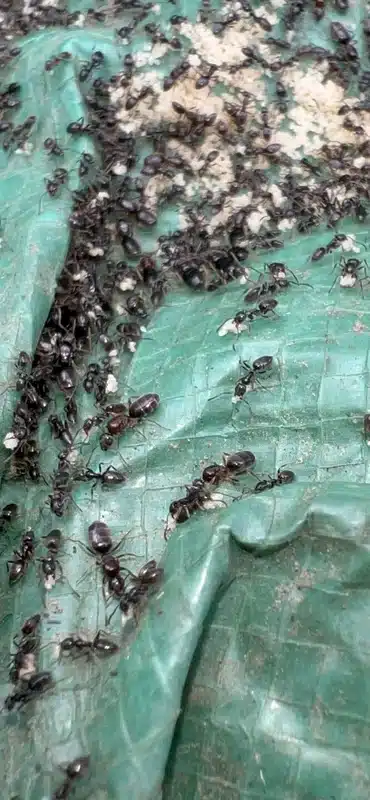Sugar ants crawling across your kitchen counter can turn breakfast into a nightmare. These tiny invaders seem to appear overnight, forming long trails from hidden nests to your food sources. The good news is that with the right approach, you can eliminate these persistent pests and keep them from coming back.
In my years as a licensed technician since 2015, I’ve seen countless homeowners make the same mistake: grabbing a can of spray from the hardware store and dousing the ant trail. This approach often makes the problem worse by scattering the colony into multiple locations. What actually works is understanding how to kill sugar ants at their source using targeted baits and non-repellent treatments.
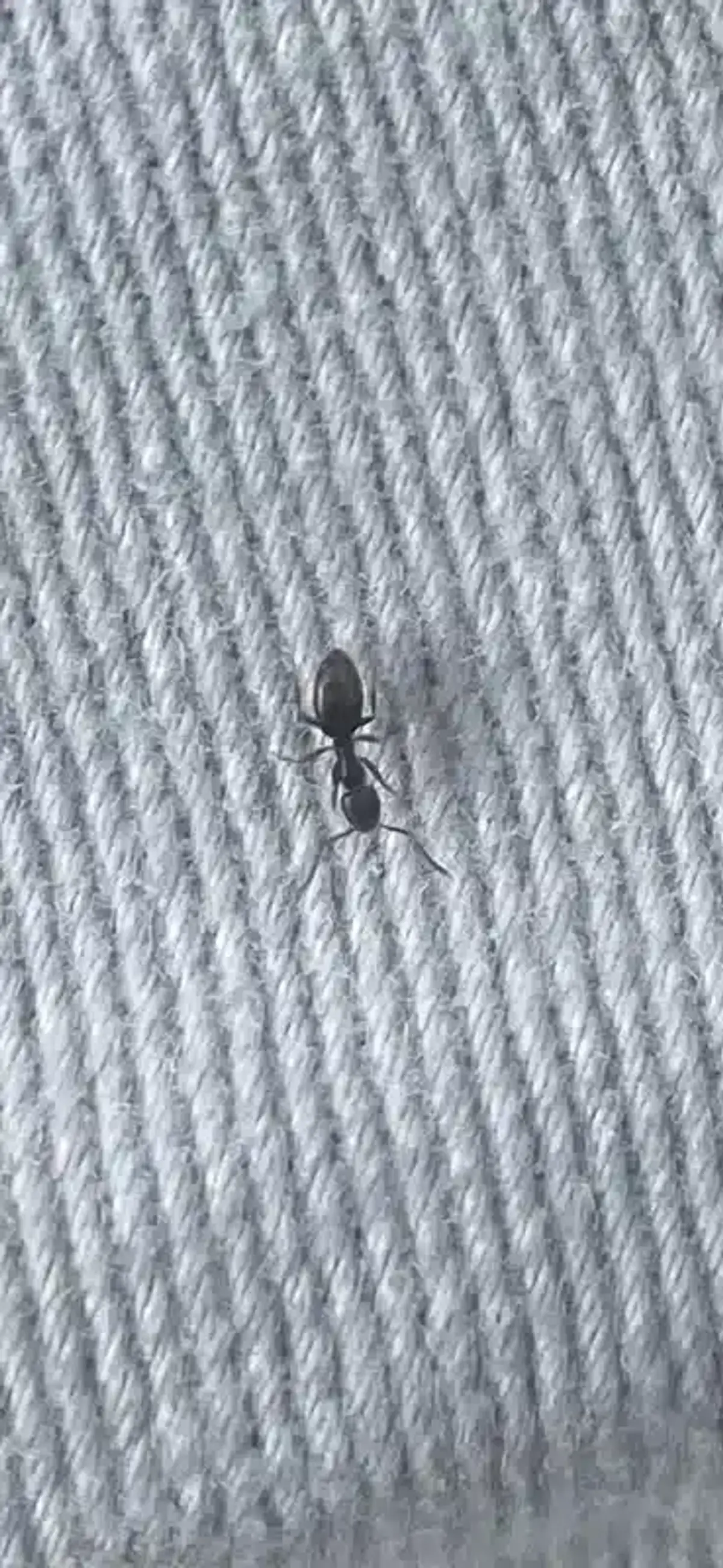
Understanding Sugar Ants and Their Behavior
The term “sugar ant” doesn’t refer to a single species. Instead, it’s a catch-all name homeowners use for small ants that love sweet foods. In the Virginia, Maryland, and DC area, you’re most likely dealing with one of these common species:
- Odorous house ants - The most common culprit, giving off a rotten coconut smell when crushed
- Pavement ants - Often nest in cracks around patios and basement slabs
- Pharaoh ants - Particularly problematic in apartments and townhomes
- Argentine ants - Increasingly found in urban areas with milder winters
These ants share some key behaviors that make them challenging to eliminate. They follow pheromone trails between their nests and food sources, and most species have multiple queens. This means spraying the visible workers only eliminates a small fraction of the colony.
Sugar ant colonies have multiple queens, which means spraying repellent chemicals often causes the colony to “bud” or split into multiple smaller colonies, spreading the problem throughout your home.
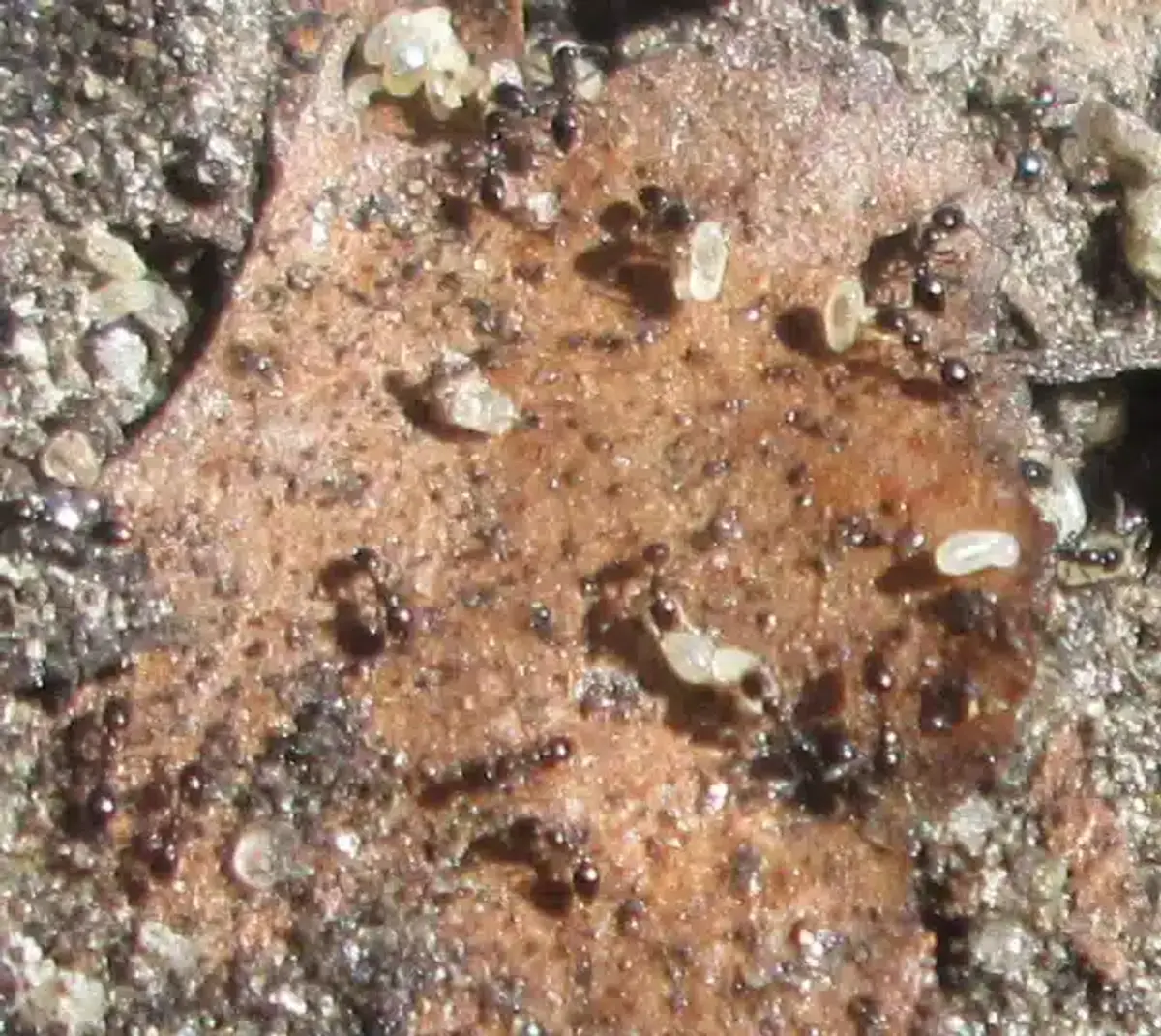
Most Effective Ant Baits for Sugar Ant Elimination
Baiting is the most effective way to kill sugar ants because it targets the entire colony, not just the workers you see. The key is using slow-acting baits that workers carry back to share with queens and larvae through a process called trophallaxis.
Proven Bait Active Ingredients
Professional-grade baits use specific active ingredients that have been tested extensively. Boric acid baits have proven highly effective in controlled laboratory conditions for sugar ant elimination.
What does the science say? 🔬
According to Penn State Extension, odorous house ants can have tens to hundreds of queens per colony, making complete elimination challenging with surface treatments alone.
University of California research demonstrates that boric acid in concentrations of 1% or less mixed with 25% sucrose shows excellent results against Argentine ants in laboratory studies. Their findings show that boric acid hydrogel baits can kill entire colonies within 3-5 days under controlled conditions.
Other effective active ingredients include:
- Fipronil - Works at very low concentrations (0.001-0.005%) with high transfer efficiency
- Imidacloprid - Studies show 80%+ reduction in odorous house ants after six weeks
- Hydramethylnon - Particularly effective against Pharaoh and pavement ants
Choosing the Right Bait Type
Sugar ants change their food preferences seasonally. In spring, when colonies are raising larvae, they need more protein. During summer and fall, they focus on carbohydrates to build energy reserves.
For carbohydrate-seeking ants, liquid baits and gels work best. When ants are in their protein phase, granular baits containing fat or protein sources are more attractive. Many homeowners find success using dual-matrix baits that contain both carbohydrate and protein attractants.
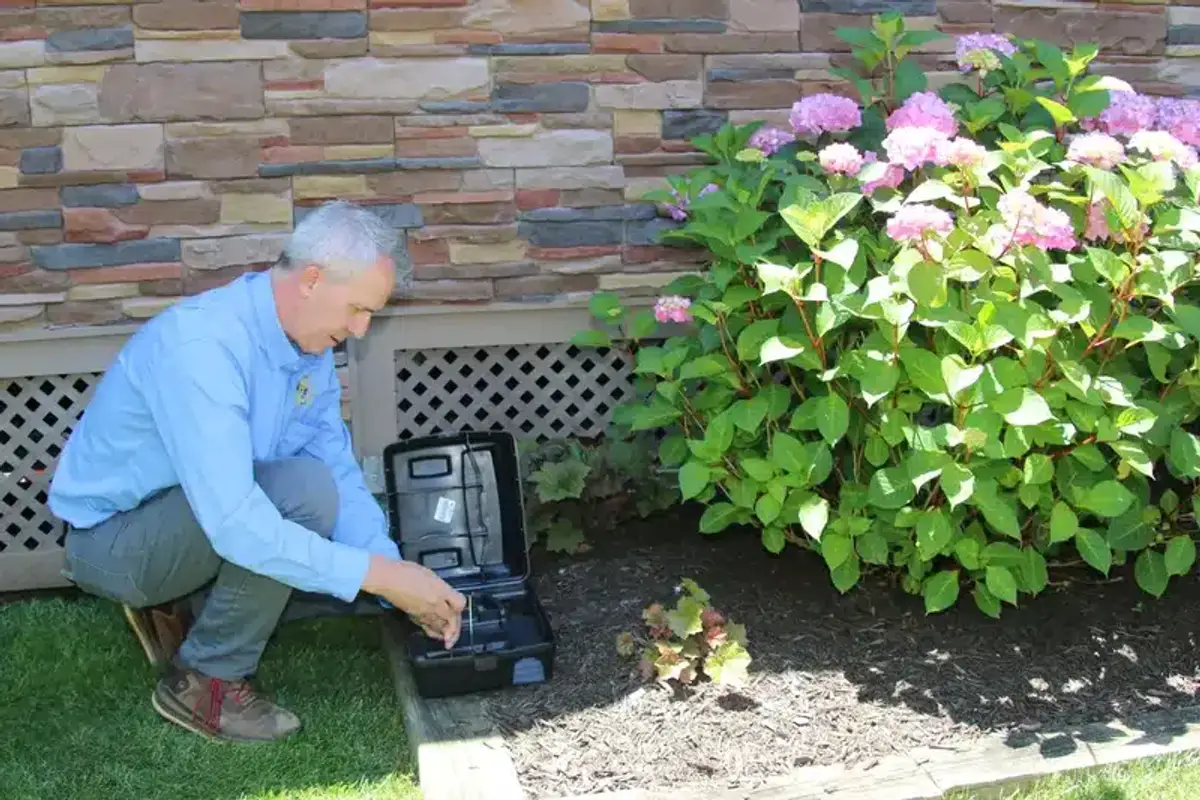
How to Get Rid of Sugar Ants with Strategic Bait Placement
Where you place baits matters as much as what you use. I always tell customers to follow the ant trails to find the best placement spots. Indoor stations should go in corners, under appliances, and along baseboards where ants travel. Never place bait stations on food preparation surfaces.
Outdoors, place stations every 8-12 feet along your foundation and reload them weekly until activity stops. Keep any repellent sprays at least 3 feet away from bait stations to avoid interfering with ant behavior.
Targeted Treatment Methods for Sugar Ant Colonies
While baits form the foundation of effective sugar ant control, targeted treatments can enhance results, especially when dealing with large infestations. The goal is always to reach the entire colony without causing it to split.
Non-Repellent Spray Applications
Non-repellent insecticides allow ants to walk through treated areas without detecting the chemical. This lets them carry the active ingredient back to the colony before it takes effect. Professional-grade products like chlorfenapyr and fipronil create invisible barriers that eliminate ants over several days.
These treatments work particularly well around entry points like door frames, window sills, and foundation cracks. The key difference from hardware store sprays is that ants don’t avoid treated areas, ensuring maximum colony exposure.
Dust Applications for Wall Voids
When sugar ants nest inside wall cavities, dust applications can reach areas that sprays and baits cannot. Boric acid dust or amorphous silica aerogel applied with a hand-bellow duster targets hidden nest sites effectively.
This technique requires drilling small access holes and should generally be left to licensed technicians who understand building construction and have the proper equipment.
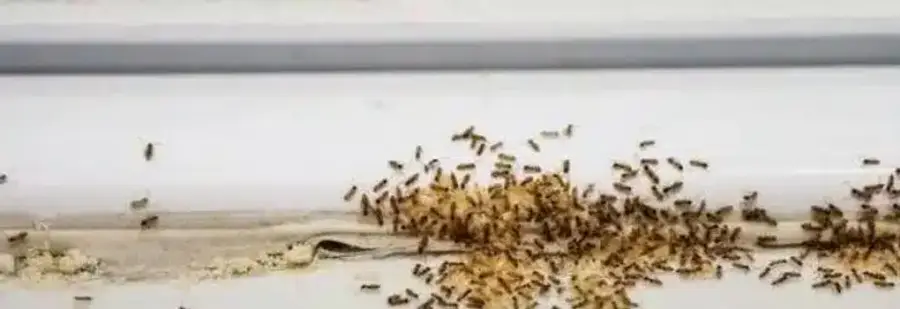
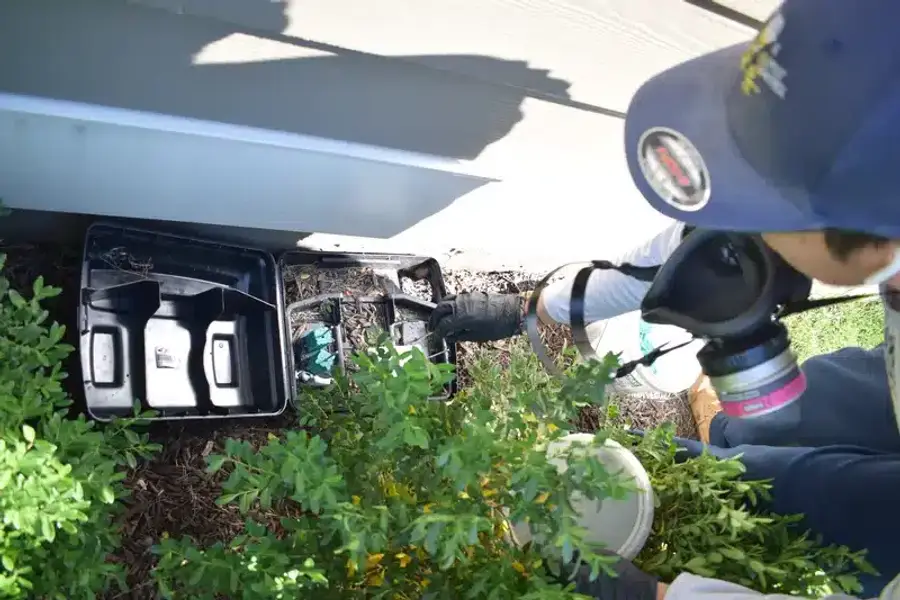
Direct Nest Treatment
When you can locate the actual nest outdoors, direct treatment offers the fastest results. This involves drenching the nest site with 1-2 gallons of liquid non-repellent insecticide, disturbing the soil to ensure penetration to brood chambers.
I’ve found this particularly effective with pavement ants nesting under concrete slabs or in landscape areas. The treatment eliminates the colony at its source rather than waiting for bait transfer.
When to Call Professionals
Direct nest treatments require specialized equipment and knowledge of insecticide application rates. Improper application can contaminate soil or fail to penetrate deep enough to reach all colony chambers.
DIY Methods vs Professional Sugar Ant Treatments
Many homeowners wonder whether they can handle sugar ant problems themselves or need professional help. The answer depends on the severity of the infestation and the species involved.
When DIY Methods Work to Get Rid of Sugar Ants
For light infestations caught early, over-the-counter boric acid baits like Terro can be effective. These products work on the same principle as professional treatments but use lower concentrations of active ingredients.
DIY approaches work best when:
- You’re dealing with a single trail of ants
- The infestation is limited to one room
- You catch the problem within the first few days
- The ants are clearly coming from outside rather than nesting in walls
The main advantage of DIY treatment is immediate availability and lower cost. You can start treatment the same day you notice the problem without waiting for a service appointment.
Limitations of DIY Approaches
Consumer-grade products have significant limitations. You can’t access the non-repellent concentrates that professionals use, and you don’t have the specialized application equipment for wall void treatments.
More importantly, many homeowners accidentally make infestations worse by using repellent sprays from the hardware store. I’ve seen customers create multiple satellite colonies throughout their homes by spraying ant trails with pyrethroid-based products.
When to Call Professional Help
Certain situations require professional intervention from the start. University of California research shows that Pharaoh ants are particularly difficult to eliminate and often require specialized baiting protocols.
Professional treatment becomes necessary when:
- Ants appear in multiple rooms or floors
- You’re dealing with apartments or townhomes where colonies can span units
- DIY baits haven’t worked after two complete cycles
- Ants are emerging from electrical outlets or plumbing areas
- The infestation persists through winter months
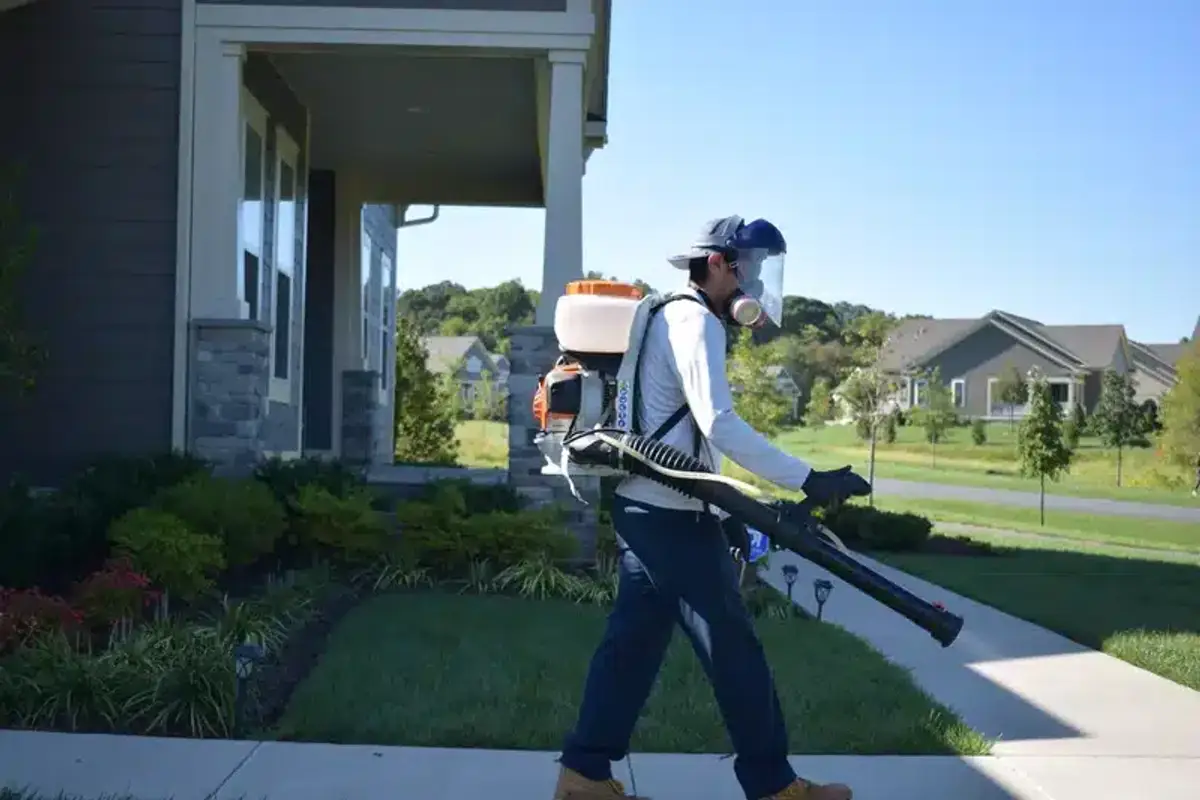
Professional Advantages
Licensed technicians bring several advantages to sugar ant elimination. First, we can correctly identify the species, which determines the most effective treatment approach. We also have access to professional-grade products that aren’t available to consumers.
Perhaps most importantly, we understand colony biology and behavior patterns. This knowledge helps us predict where ants are likely to relocate when disturbed and how to prevent colony splitting.
Our service also includes follow-up visits over the 6-week bait cycle, which is crucial for complex infestations. We monitor bait consumption, adjust placement as needed, and ensure complete colony elimination.
| DIY Treatment | Professional Treatment | |
|---|---|---|
| Timeline | 4-8 weeks | 3-6 weeks |
| Success Rate | 60-70% | 90-95% |
| Cost | $20-50 | $150-400 |
| Best For | Single room infestations | Multi-room or persistent problems |
How to Prevent Sugar Ants Long-Term
Eliminating an active infestation is only half the battle. Preventing future sugar ant problems requires addressing the conditions that attract them to your home in the first place.
Prevent Sugar Ants with Proper Sanitation
Sugar ants are incredibly efficient at finding food sources. Even tiny crumbs or sticky residues can support entire colonies. The most effective prevention starts with thorough sanitation.
Focus on these key areas:
- Wipe down counters and surfaces with soapy water to remove pheromone trails
- Store all food in sealed containers, including pet food
- Clean under appliances where crumbs accumulate
- Fix leaky pipes and eliminate standing water
- Empty trash regularly and keep bins clean
Pay special attention to kitchen areas where ants commonly invade. Even the smallest food particles can attract scouts that lead entire colonies to your home.
Prevent Sugar Ants Through Structural Exclusion
Sealing entry points reduces the likelihood of future invasions. Sugar ants can squeeze through gaps as small as 1/16 inch, so thorough exclusion requires attention to detail.
Key exclusion targets include:
- Caulking gaps around windows and door frames
- Sealing cracks in foundation walls
- Installing door sweeps and weather stripping
- Screening weep holes with stainless steel mesh
- Repairing damaged siding and trim
For comprehensive guidance on exclusion techniques, check out our article on preventing ant infestations with both professional and DIY approaches.
Landscape Management
Your landscaping choices significantly impact ant activity around your home. UC IPM guidelines recommend managing outdoor conditions that support ant colonies.
Effective landscape modifications include:
- Replacing thick mulch with stone within 18 inches of your foundation
- Pruning vegetation 6-12 inches away from siding
- Managing aphids and scale insects that produce honeydew
- Maintaining proper drainage to prevent moisture accumulation
- Removing rotting wood and debris near the structure
Seasonal Monitoring and Maintenance
Sugar ant activity follows predictable seasonal patterns. Peak activity occurs from April through September when colonies are most active. Implementing a spring inspection routine helps catch problems before they become severe.
During peak season, conduct monthly inspections focusing on:
- Common entry points like door thresholds and window sills
- Kitchen and bathroom areas where moisture and food sources exist
- Basement and crawl space areas
- Outdoor areas near your foundation
Early detection allows for immediate bait placement before colonies become established indoors. This proactive approach is much more effective than waiting until you have trails marching across your counters.
How to Kill Sugar Ants: Step-by-Step Action Plan
Based on my experience helping homeowners eliminate sugar ant infestations, here’s a proven step-by-step approach that consistently delivers results:
- Identify and map ant trails - Follow workers to determine entry points and food sources
- Choose appropriate baits - Use carbohydrate baits during summer/fall, protein baits in spring
- Place baits strategically - Position stations along trails and near entry points
- Avoid repellent sprays - These interfere with bait acceptance and can scatter colonies
- Monitor and reload baits - Check stations weekly and refill as needed
- Apply perimeter treatments - Use non-repellent sprays around the foundation after baiting
- Eliminate attractants - Address sanitation and moisture issues
- Seal entry points - Prevent future invasions through exclusion work
This systematic approach addresses both immediate elimination and long-term prevention. The key is patience - effective sugar ant control takes 2-6 weeks depending on colony size and species.
Essential Sugar Ant Elimination Steps
- Use Baits, Not Sprays: Place boric acid or fipronil baits along ant trails and reload weekly until activity stops
- Be Patient: Allow 3-6 weeks for complete colony elimination - rushing with sprays will scatter the colony
- Follow the Trail: Track workers to their entry points and place bait stations strategically along these routes
- Clean Smart: Remove food sources but don’t clean ant trails until bait consumption decreases
- Seal Entry Points: Caulk gaps around windows, doors, and foundation cracks to prevent future invasions
For persistent problems or situations involving ants in wall cavities, professional intervention may be necessary to access hidden nest sites and apply specialized treatments.
Signs Your Sugar Ant Treatment Is Working
Understanding treatment progress helps you stay patient during the elimination process. Sugar ant control doesn’t happen overnight, and the signs of success aren’t always obvious.
Initially, you may see increased ant activity around bait stations. This is actually a good sign - it means workers are finding and consuming the bait. Don’t spray or disturb them during this critical phase.
Over the following weeks, look for these positive indicators:
- Reduced trail activity along previous routes
- Fewer ants appearing in kitchen and bathroom areas
- Decreased bait consumption at stations
- No new ant trails forming in different areas
Complete elimination typically takes 3-6 weeks, depending on colony size and structure. Colorado State University Extension emphasizes that patience is crucial - rushing the process with additional sprays often undermines bait effectiveness.
If you’re still seeing significant activity after 6 weeks of consistent baiting, it may indicate multiple colonies or the need for professional-grade treatments.
Common Mistakes That Make Sugar Ant Problems Worse
Over the years, I’ve seen homeowners make the same mistakes repeatedly. Understanding these pitfalls helps you avoid actions that can turn a minor ant problem into a major infestation.
Using Repellent Sprays on Ant Trails
This is the biggest mistake I encounter. Spraying ant trails with pyrethroid-based products from the hardware store may kill visible workers, but it also disrupts pheromone trails and can cause colonies to split into multiple locations.
Instead of eliminating the problem, you often end up with several smaller infestations throughout your home. Each new colony can establish independent trails, making the overall situation much more complex.
Placing Baits in Wrong Locations
Many homeowners place bait stations in convenient spots rather than where ants actually travel. Ants follow specific pheromone trails, and baits must be positioned along these routes to be effective.
Take time to observe ant behavior and place stations where you see consistent traffic. Moving stations even a few inches can make the difference between success and failure.
Removing Baits Too Early
Impatience leads many people to give up on baits after just a few days. Effective colony elimination requires sustained bait consumption over several weeks. Removing stations prematurely allows surviving ants to rebuild the colony.
The process requires patience, especially with species like Pharaoh ants that may take 4-6 weeks to eliminate completely.
Cleaning Away Ant Trails Immediately
While cleanliness is important for prevention, wiping away active ant trails during treatment interferes with bait discovery. Allow trails to remain during the initial treatment phase so workers can find bait stations and recruit nestmates.
Clean pheromone trails with soapy water only after bait consumption decreases and ant activity subsides.

Learning how to kill sugar ants effectively requires understanding their biology, using the right products, and avoiding common mistakes. Whether you choose DIY methods or professional treatment, the key is patience and persistence. Remember that successful ant control targets entire colonies, not just the workers you see.
If you’re dealing with a persistent sugar ant problem or want professional expertise from the start, our experienced team can provide targeted treatments using proven methods. We’ve been serving the DC metro area since 1968 and use products that have passed through our internal research team.
For questions about your specific situation or to schedule an inspection, call us at 703-683-2000 or email info@bettertermite.com. Our licensed technicians can provide expert guidance and develop a treatment plan tailored to your home’s unique needs.
Frequently Asked Questions
How quickly do sugar ant baits work?
+
Sugar ant baits typically take 3-6 weeks to eliminate entire colonies. You may see increased activity initially as workers discover the bait, followed by gradual reduction over several weeks. The timeline depends on colony size and species.
Why do I see more ants after placing bait stations?
+
Increased ant activity around bait stations is normal and indicates the treatment is working. Workers recruit nestmates to the food source, which helps distribute the bait throughout the colony. Avoid spraying during this critical phase.
Can I use regular household cleaners to kill sugar ants?
+
While [baking soda](/does-baking-soda-kill-ants/) and other home remedies may kill individual ants, they don't eliminate colonies effectively. Professional baits containing boric acid, fipronil, or imidacloprid provide much better long-term results by targeting the entire colony structure.
Where do sugar ants typically nest in homes?
+
Sugar ants commonly nest in wall voids around plumbing, under concrete slabs, in mulch beds near foundations, and in moisture-damaged wood areas. Indoor nests often occur in [bathrooms](/why-are-there-ants-in-my-bathroom/) and kitchens where water sources are available.
How do I know if my sugar ant treatment is working?
+
Signs of successful treatment include reduced trail activity, decreased bait consumption, fewer ants in kitchen and bathroom areas, and no new trails forming. Complete elimination typically takes 3-6 weeks with consistent baiting.
Should I remove dead ants during treatment?
+
Remove dead ants for cleanliness, but don't disturb active trails or bait stations during treatment. Allow living workers to continue accessing baits and carrying them back to the colony. Clean thoroughly only after ant activity subsides.
What's the difference between sugar ants and other ant species?
+
Sugar ant is a general term for small ants attracted to sweet foods, including odorous house ants, pavement ants, and Pharaoh ants. Proper identification matters because different species require different treatment approaches and have varying colony structures.
Can sugar ants damage my home?
+
Sugar ants don't cause structural damage like carpenter ants, but they contaminate food sources and can be persistent nuisances. Some species like Pharaoh ants can spread bacteria in healthcare settings. Focus on elimination rather than damage concerns.
How do I prevent sugar ants from returning?
+
Prevention involves eliminating food sources through proper sanitation, sealing entry points like cracks and gaps, managing moisture issues, and maintaining proper landscaping. Regular monitoring during peak season (April-September) helps catch new problems early.
With five years of hands-on experience in the pest control industry, George Schulz is a registered technician with the Virginia Pest Management Association and a proud third-generation professional in a family business that's been protecting homes for over 57 years. He manages and trains a team of service pros while also leading internal research efforts—recently spearheading a deep-dive review of thousands of documents on pest control materials to hand-pick the most kid and pet friendly, most effective solutions tailored specifically for homes in the DC metro area.
